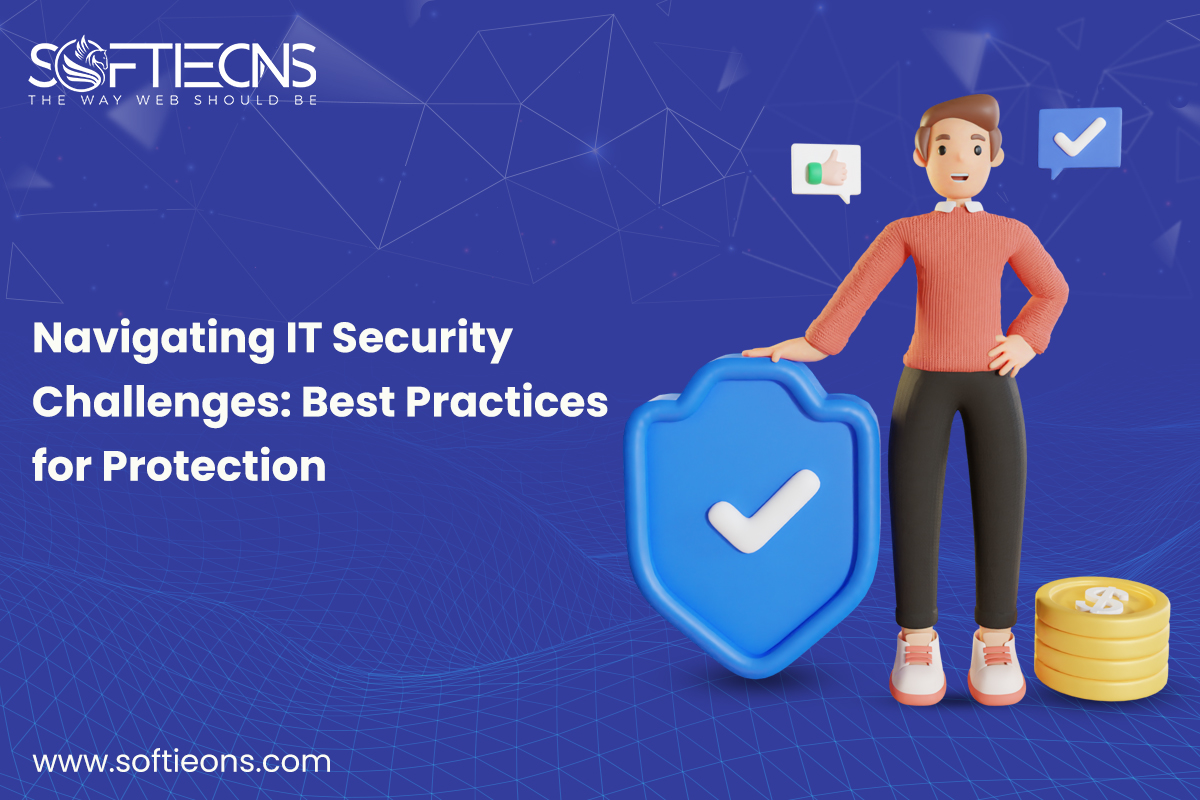Navigating IT Security Challenges: Best Practices for Protection
Wed, 15 May 2024
In today's digital environment, cybersecurity is paramount for organizations of all sizes. As technology evolves and threats evolve, meeting IT security challenges requires a proactive approach and adherence to best practices. This blog explores common security challenges facing businesses and provides insight into effective strategies to improve protection and reduce risk.
Introduction: The Importance of IT Defense
Effective IT defense is essential to protecting sensitive data, maintaining business continuity and protecting against cyber threats. As cyber-attacks and data breaches become more common, organizations must prioritize strong security measures to ensure the integrity, confidentiality and availability of their IT systems and data. This blog discusses the main IT security challenges and outlines best practices to effectively address them. of.
IT Security Challenges
1. Cyber Threats and Attacks
Cyber threats are constantly evolving, from ransomware and phishing attacks to malware and insider threats. Organizations face the constant challenge of protecting themselves against these advanced and persistent threats that can disrupt operations and compromise sensitive data.
2. Data security breaches and privacy issues
data security breaches can have serious consequences, such as financial loss, reputational damage, and legal consequences. Protecting sensitive data and ensuring compliance with data protection regulations are constant challenges for businesses, especially in industries that process large amounts of customer data.
3. Complexity of IT infrastructure
The complexity of modern IT environments, including cloud services, Internet of Things devices and networked systems, presents challenges to information security management. Securing diverse and interconnected technologies requires comprehensive strategies and robust controls to reduce vulnerability and minimize risk.
4. Lack of skills and resource constraints
The lack of qualified cybersecurity professionals is a major challenge for organizations seeking to establish and manage effective information security programs. Limited resources, including budget constraints and technology limitations, can further impede the implementation of strong security measures.
5. Compliance and Regulatory Requirements
Compliance with compliance standards and regulations such as GDPR, HIPAA or PCI DSS adds complexity to IT security projects. Organizations must comply with legal frameworks and industry-specific regulations to ensure adequate data protection and regulatory compliance.
IT Security Best Practices
1. Regularly audit security and evaluate risks
Assess your organization's security posture through regular audits and risk assessments. Identify vulnerabilities, prioritize risks and develop mitigation strategies to strengthen your defenses against potential threats.
2. Deploy multilayered security controls
deploy a multilayered approach to security that includes firewalls, intrusion detection systems (IDS), endpoint protection, and encryption. Implement access control and authentication mechanisms to limit unauthorized access to critical systems and data.
3. Educate and train employees
Invest in employee cybersecurity training to foster a security-aware culture. Train employees on best practices for phishing scams, password hygiene and sensitive information management to reduce human security risks. 4. Enhance privacy and data protection measures
Protect sensitive data with effective data encryption, data masking and secure data retention policies. Comply with data protection rules and implement data storage, deletion and access control principles.
5. Monitor and Respond to Security Incidents
Establish incident response protocols and procedures to identify, investigate and respond to security incidents. Monitor network activity, analyze logs, and deploy threat detection tools to detect and mitigate potential threats in real time.
6. Keep your security patches and upgrades up to date.
Regularly update software, firmware, and security patches to fix security holes and protect against known exploits. Implement automated patch management systems to ensure timely updates across your IT infrastructure.
7. Collaborate with security partners and industry experts
Connect with cybersecurity vendors, industry associations and peers to stay informed about emerging threats and best practices. Leverage external expertise and resources to improve your information security capabilities and meet complex information security challenges.
In summary
The transition to IT security challenges requires a holistic and proactive approach that prioritizes risk management, sustainability and continuous improvement. By responding to the key challenges discussed and implementing security best practices, organizations can improve their cybersecurity posture and mitigate the impact of potential threats.
Effective security measures, such as conducting regular inspections, implementing multi-level controls and investing in employee training, are essential components of a strong security strategy. By monitoring vulnerabilities, collaborating with industry experts and meeting regulatory requirements, organizations can strengthen their defenses and reduce the likelihood of security breaches.
It's critical to realize that maintaining cybersecurity necessitates constant attention to detail and flexibility in response to changing threats.By fostering a culture of security awareness and responsibility throughout the organization, companies can empower their teams to actively participate in the fight against cyber risks.
Investing in IT security does not only mean protecting data and systems but also ensuring the trust of customers, partners and stakeholders. By adopting a proactive approach to cybersecurity and integrating best practices into daily operations, organizations can effectively navigate IT security challenges and build a sustainable foundation for long-term success in the digital age.
POPULAR POSTS
Shopify vs. WordPress: Which one is best for e-commerce?
Wed, 07 Apr 2021Role of IoT in the Real Estate Industry
Wed, 14 Apr 2021Why UX And UI Is Important For Mobile Application Development
Sat, 01 May 2021Telemedicine's Advantages in Nursing Homes
Fri, 24 Dec 2021RECENT POSTS
Title: Run Your Entire Real Estate Business From Your Phone
Fri, 12 Dec 2025









